Canon EF 100-400 mm f/4.5-5.6L IS II USM
3. Build quality and image stabilization
In the photos shown below the tested lens is positioned next to its predecessor; both lenses are set at 100 mm and at 400 mm focal lengths.
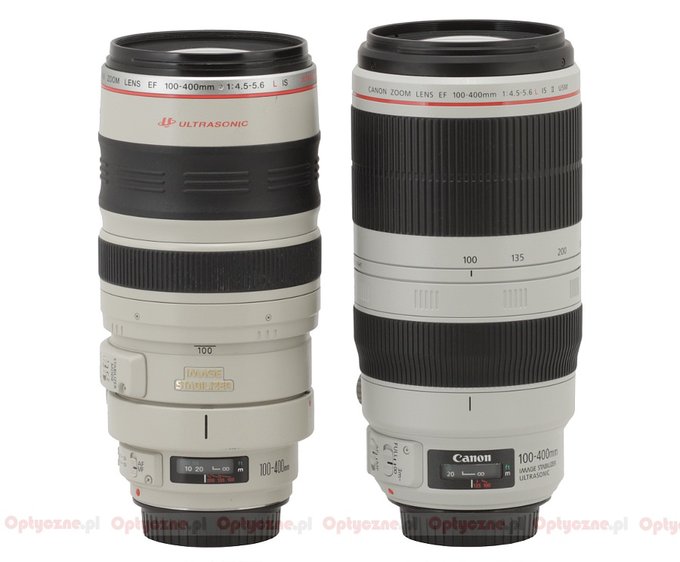 |
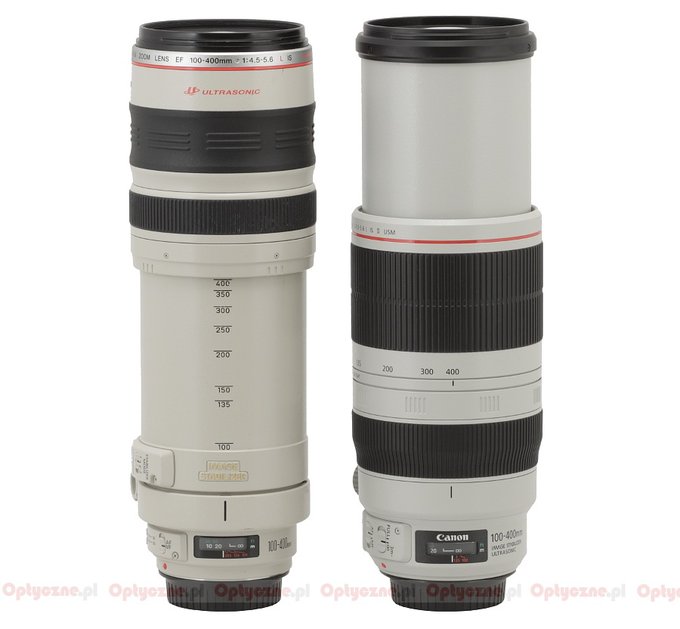 |
Please Support UsIf you enjoy our reviews and articles, and you want us to continue our work please, support our website by donating through PayPal. The funds are going to be used for paying our editorial team, renting servers, and equipping our testing studio; only that way we will be able to continue providing you interesting content for free. |
- - - - - - - - - - - - - - - - - - - - - - - - - - - - - - - - - - - - - - - - - - - - - - - -
The lens starts with a metal bayonet mount with a contact plate which is surrounded by a rear element system. The last of rear elements is about 3 cm in diameter and, at 100 mm focal length, it is hidden inside the casing almost 3 cm deep. That value increases to about 4 cm when you pass to the maximum focal length. The interior of the tube, as visible from the rear, is black and properly matted with black velvet. You can’t notice any shiny parts or electronics components.
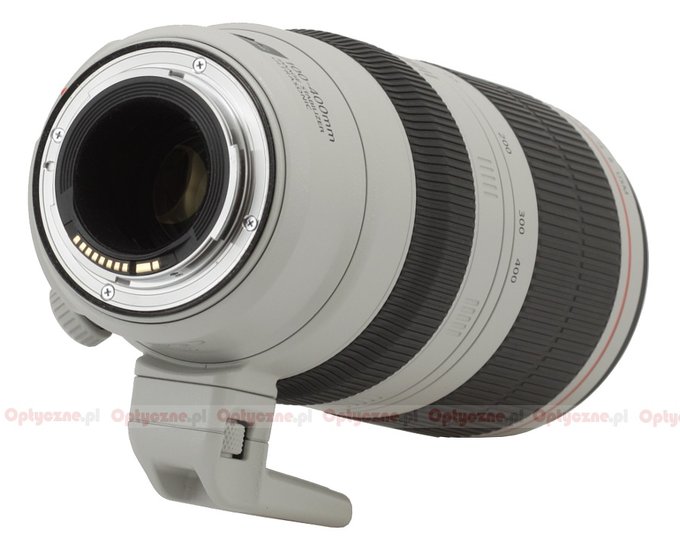 |
On the white casing of the lens made of magnesium composites you find first a red dot marking the proper place where you should align the lens with a camera body; then you see a distance scale behind a window. The scale is expressed in feet and in meters; below there are infinity markings for infrared photography at 100 and 135 mm focal lengths.
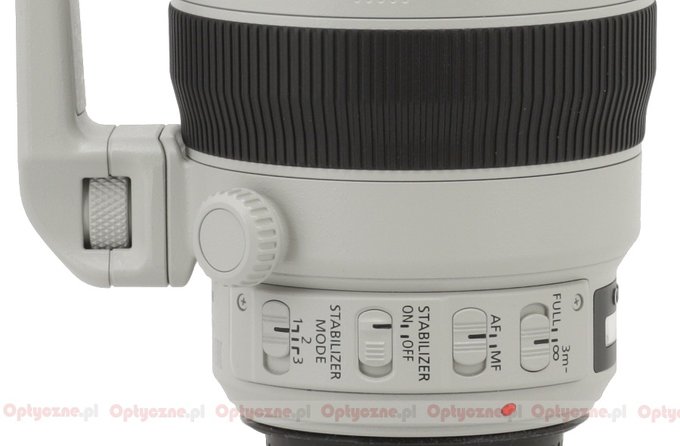 |
Looking from above, on the left side of the distance scale you get four switches. The first one allows you to choose an autofocus working range with two possible options: FULL and from 3 meters to infinity. The second one controls the focusing mechanism working modes (AF/MF), the third one switches the stabilization on and off (STABILIZER ON/OFF) and the fourth one allows you to choose its mode (STABLIZER MODE). You get as many as three options here: 1- standard mode, 2- panning mode, and 3- during exposure only. On the side of the lens opposite do the distance scale you can also find the serial number and information that the lens was produced in Japan.
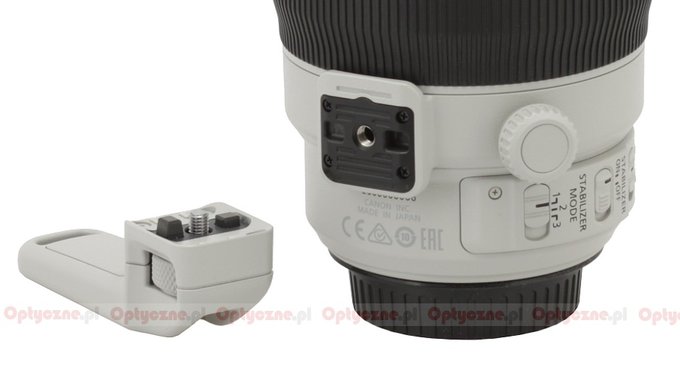 |
The next part is a tripod ring. In the case of the predecessor you could take it off completely; in the new model you can unscrew just the mount but the tripod collar must stay on the lens.
Then you see a manual focus ring. It is 31 mm wide and most of its surface is covered by rubber ribs. It moves evenly, smoothly and is well-damped. Running through the whole distance scale takes a turn through an angle of about 220 degrees. It is a huge value for a lens equipped with an autofocus, allowing you quite precise manual settings.
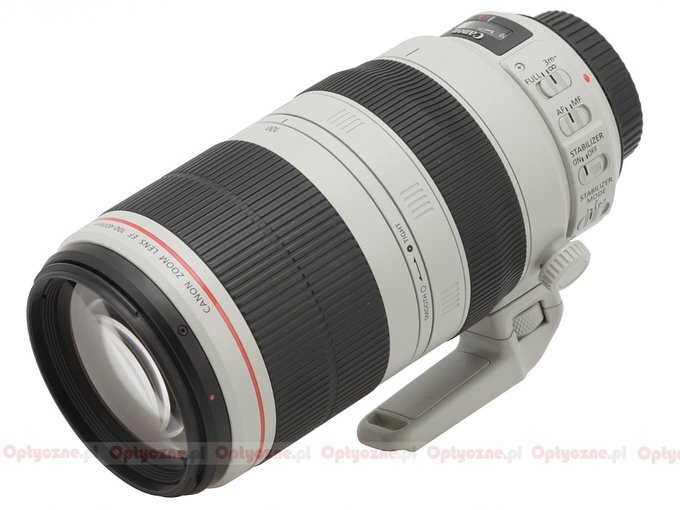 |
The existence of the next part can’t be explained otherwise than a compliment directed to the sentimental fans of the previous version of the 100-400L lens. You dealt there with a “pump” so you needed a SMOOTH-TIGHT drag control ring which regulated how smoothly the inner tube could be extended while zooming. In traditional zoom lenses the SMOOTH-TIGHT mechanism is not necessary as the change of focal length and the movement of the front element system is caused by rotation of a dedicated ring. The producer saved that mechanism in this case because its presence means the zoom ring of the100-400L II can work in two modes. I have to admit out of these two I liked the TIGHT mode option far better. The SMOOTH one was maybe a tad too smooth, if you get my drift…
The zoom ring itself is huge, as wide as 77 mm. Most of its surface is covered by rubber ribbing under which you can see focal length markings at 100, 135, 200, 300 and 400 mm. On the other side of the ribbing there is a red stripe, characteristic for the L series, the name and the parameters of the lens.
The front element is 71 mm in diameter, surrounded by a filter thread which doesn’t rotate, with a diameter of 77 mm, and a hood thread (the hood is included in the product bundle). The whole front element system extends on a very solid tube when you increase the focal length – during that operation the lens might get longer by 77 mm.
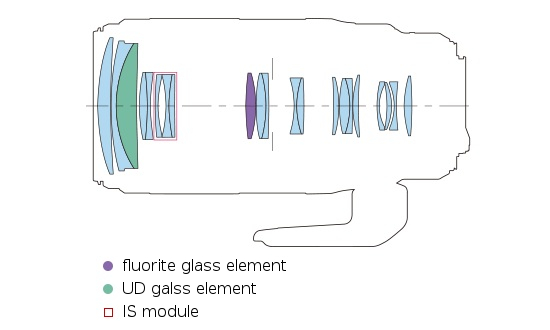 |
The optical construction of the tested lens consists of as many as 21 elements positioned in 16 groups. One element is made of low dispersion Super UD glass and one is made of fluorite. Inside you can also find a circular aperture with nine blades which can be closed down to a value ranging from f/32 to f/40, depending on the focal length. Apart from that the producer boast of using special Air Sphere Coatings (ASC) which are supposed to guarantee a good performance against bright light and photos without ghosting or flares.
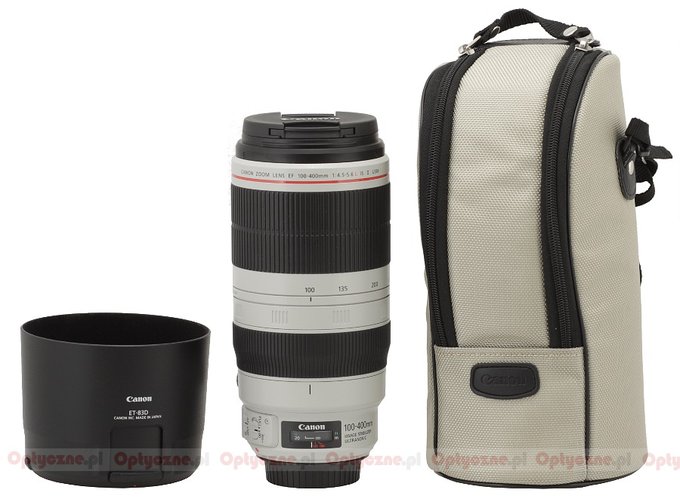 |
Buyers get both caps, an built-in tripod ring, a hood and a stylish, hard case along with the lens in the box.
Optical stabilization
The producer declares that the image stabilizer system featured in the lens is as effective as 4 EV. The last launches, like the launch of the EF 70–300L or the EF 70–200 mm f/2.8L IS USM II, showed that these words are not merely a publicity stunt and the efficiency of Canon lenses stabilization can even exceed momentarily its nominal value. In order to check that claim we took several dozen photos at 400 mm using exposure times ranging from 1/400 to 1/5 of a second with the stabilization switched on and off. The percentage of blurred photos we presented in a form of an exposure time function, expressed in EV (and 0 EV is an equivalent of 1/320 of a second).
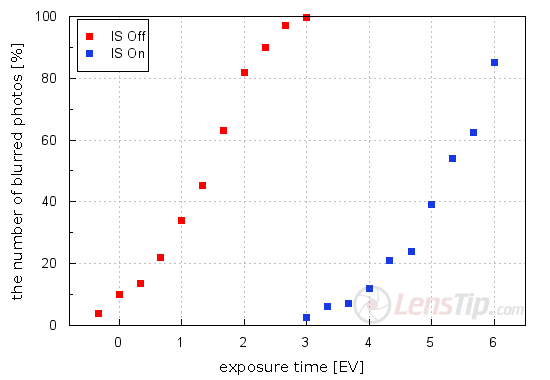
As you can notice the maximum distance between both curves reaches 4 EV and such is the stabilization efficiency of the tested lens. It is an excellent result, in full accordance with the claims of the producer. One of the biggest problems of the lens’s predecessor, which stabilization rated at only 2 EV stops, has been remedied.






